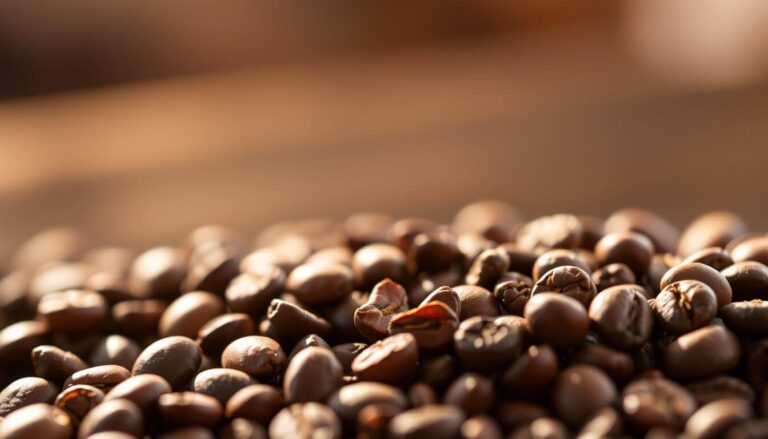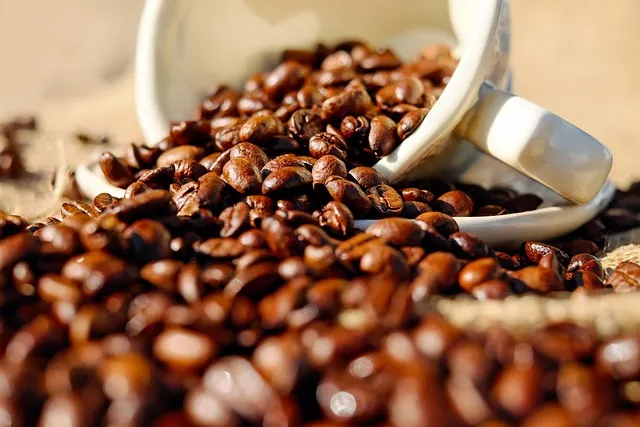Coffee enthusiasts, rejoice! Whether you’re a casual fan or a connoisseur, understanding the nuances between Arabica and Robusta can elevate your daily cup. The world of coffee is vast and diverse, with a multitude of flavors and brewing methods to explore. Arabica coffee vs Robusta The debate between Arabica coffee vs Robusta centers around differences in taste, production, and quality. While Robusta is known for its bold flavor and higher caffeine content, Arabica is prized for its nuanced taste and aromatic qualities. As we dive into the world of coffee, you’ll discover the unique characteristics of each type and how they cater to different tastes and brewing methods. Key Takeaways The World of Coffee Beans: An Overview As one of the most traded commodities, coffee has a far-reaching influence on global markets and local communities. With a rich history and diverse cultural significance, coffee is a drink that brings people together across the globe. Coffee’s Global Impact Coffee is a major player in the global economy, with millions of people involved in its production, processing, and trade. According to the International Coffee Organization, coffee is one of the most widely traded agricultural commodities. The global coffee industry has a significant impact on the economies of producing countries, supporting livelihoods and contributing to national incomes. The global consumption of coffee is substantial, with over 2.25 billion cups consumed every day worldwide. This demand drives a multibillion-dollar industry that involves a complex network of farmers, traders, and retailers. Major coffee-consuming countries include the United States, Brazil, and European nations, where coffee culture is deeply ingrained. The Two Major Players: Arabica and Robusta The world’s coffee is primarily produced from two species of coffee beans: Arabica and Robusta. Arabica is known for its mild and nuanced flavor, accounting for around 60-70% of global coffee production. It is grown at high altitudes and is more sensitive to growing conditions. In contrast, Robusta is easier to grow, more disease-resistant, and has a bolder, harsher flavor. It is often used in instant coffee and espresso blends. The distinction between Arabica and Robusta is crucial for coffee producers, traders, and consumers. The choice between these two beans affects the flavor, quality, and price of coffee. As the demand for specialty coffee grows, the preference for Arabica has increased due to its complex flavor profile and higher quality. Arabica Coffee: The Delicate Favorite The delicate flavor profile of Arabica coffee has made it a favorite among coffee connoisseurs worldwide. With a history that dates back centuries, Arabica has established itself as a premium coffee choice. Origin and History Arabica coffee originated in Ethiopia, where it was first cultivated over 1,000 years ago. Its historical significance is not just limited to its origin; it has been a major player in global coffee trade for centuries. The nuanced flavor and mild taste of Arabica have contributed to its popularity. “Arabica coffee is known for its complex flavor profile, which includes notes of fruit, floral, and wine.” – Coffee Connoisseur Growing Conditions and Regions Arabica coffee requires specific growing conditions to thrive. It is typically grown at high altitudes, where the cooler temperatures and richer soil contribute to its distinct flavor. Altitude Requirements Arabica coffee plants are usually grown at altitudes between 1,500 and 2,200 meters above sea level. This high altitude is crucial for developing the coffee’s complex flavor profile. The slower maturation process at higher elevations allows for a more even ripening of the coffee cherries. Major Growing Countries Some of the major countries where Arabica is grown include Colombia, Ethiopia, Brazil, and Indonesia. These countries provide the ideal climate and altitude for Arabica cultivation. The top producers are known for their high-quality Arabica beans, which are sought after by coffee roasters worldwide. Edit Delete Robusta Coffee: The Bold Contender As a contender in the coffee world, Robusta has its own unique strengths. While Arabica may be the more popular choice among coffee connoisseurs, Robusta’s robustness and higher caffeine content make it a valuable component in many coffee blends. Origin and History Robusta coffee, scientifically known as Coffea canephora, has its origins in central and western Africa. It was first discovered in the Congo Basin in the late 19th century. Unlike Arabica, which is more sensitive to growing conditions, Robusta is easier to cultivate and more disease-resistant, making it a practical choice for many coffee farmers. The history of Robusta coffee is closely tied to its use in instant coffee and espresso blends. Its bold flavor and higher caffeine content made it an attractive option for coffee manufacturers looking to create a stronger, more affordable product. Growing Conditions and Regions Robusta coffee is more adaptable to different climates and soil types compared to Arabica. It thrives in lower altitudes and is more resistant to pests and diseases, making it a hardy crop for regions where Arabica might struggle. Climate Resilience One of the key advantages of Robusta is its climate resilience. It can grow in a variety of conditions, from tropical lowlands to regions with higher temperatures. This resilience is crucial in the face of climate change, which is affecting coffee production worldwide. Robusta’s ability to withstand harsher conditions makes it an important crop for the future of coffee production. Major Production Areas The major producers of Robusta coffee include Vietnam, Brazil, and Indonesia. These countries have the ideal climate and conditions for Robusta cultivation. Vietnam, in particular, is the largest producer of Robusta, accounting for a significant portion of the world’s total Robusta production. Robusta’s contribution to the global coffee supply is significant, not just in terms of quantity but also in its role in coffee blends. Its bold flavor and higher caffeine content make it a valuable component in many coffee products. Arabica Coffee vs Robusta: Physical Differences The physical differences between Arabica and Robusta coffee beans are not just about aesthetics; they hint at the distinct characteristics of each. One of the most noticeable differences lies in the beans themselves. Bean Shape and Size Arabica beans are generally larger and more elongated than Robusta beans. This difference in size and shape is due to the varying conditions under which these coffee plants are grown. Arabica beans tend to be more irregular in shape, which can be an indicator of their higher quality and more complex flavor profile. In contrast, Robusta beans are typically rounder and smaller. Arabica vs Robusta coffee beans comparison Plant Characteristics The plants from which Arabica and Robusta beans are harvested also exhibit distinct characteristics. Arabica plants are typically taller and more sensitive to temperature and humidity, requiring more precise growing conditions. On the other hand, Robusta plants are hardier and more resilient, capable of thriving in a wider range of environments. This hardiness is one reason Robusta is often used as a base for instant coffee and espresso blends. Understanding these physical differences can help coffee enthusiasts appreciate the unique qualities of each coffee type and make informed choices about their coffee preferences. Taste Profile Comparison…




